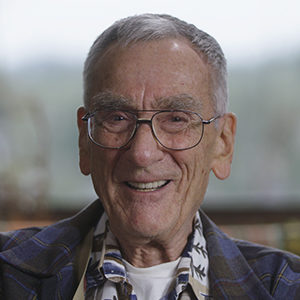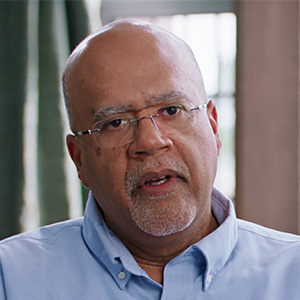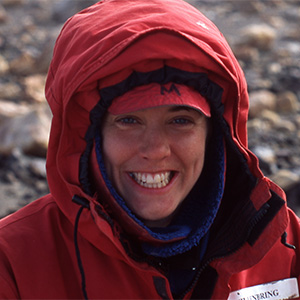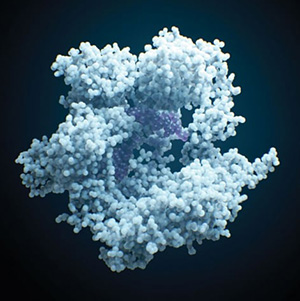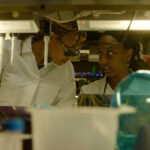John Clements, Ph.D.: Back in the 1950s and early ’60s, if they had full-blown respiratory distress syndrome, more than 90% would die. It occurs in its most severe form for prematurely born babies, when the lungs have not yet matured. As a child, I was born in Auburn, New York, a wonderful place for a child to grow up. So, at age eight or nine, I’d already thought I wanted to be a scientist. I was able to gather materials to make a huge Tesla coil, which was 15,000 volts, and a kilowatt of power.
My parents… mother, a proper Victorian lady born in 1880. Now, my father, an attorney in general practice, was also an intellectual person. It was obvious to me that my parents were pleased when I brought home good grades. So, I graduated at the top of my class, and I only applied to one university. That was Cornell in Ithaca. I went there. And so, I did college and medical school in five years, five and a half years.
The questions that I came… was assigned to study dealt with nerve gases: sarin, tabun, gases like that. The effects of those agents — anticholinesterase agents — on the lungs. So, I became a physiologist, but I became a lung physiologist, in spite of being out of school for just a couple of years and being woefully ignorant about it. But then a marvelous thing happened. The army chemical center had contracts, research contracts, with people at universities.
I was assigned one of those for a contract at the Harvard School of Public Health, where they were doing lung research related to artificial ventilation and assistance for soldiers with respiratory problems. Jere Mead was studying lung mechanics. But then Ted Radford came to that department to do research with Jere. And he… Ted took a very physicochemical approach to lung problems. He was curious about the problems of oxygen uptake through the lungs, basically, how much area is required in the lungs, between the air and the capillary blood, to provide an adequate pathway for uptake of oxygen?
It occurs by diffusion; it’s not an active transport. So the only way you can get enough transferred fast enough to support metabolic processes, especially under exercise, is to have a very large area in the lungs. That was a given. That was supported by morphometric measurements, cutting up tissue into slices, doing geometric measurements on them, and using those to estimate area, which turned out to be huge.

If you unrolled the area of the small air spaces in the lung, it would cover… for one adult, it would cover practically a football field. Ted Radford didn’t think you could fold up a football field and get it inside the chest of a human adult. And so he wanted to estimate the area by a different method, not histologic/morphometric methods. And he took the physicochemical approach. And he did, really, a very clever kind of experiment.
He said, I want to know the area of the surface of the lung. And so what property does that have that would have enable me to estimate it? And he knew about surface tension. It’s equivalent to the surface free energy of a liquid surface. And so he thought, well, if I can guess what the surface tension is in the lungs, then I can divide that… the energy of the surface in order to calculate the area. So, a non-morphometric way of doing it. But then he had to find out what the energy of the alveolar surfaces totaled up to be.
And he did that by doing… making pressure-volume studies on the lungs. So then, if you knew or could assume a surface tension, you could take that simple equation and divide the energy by the surface tension, and that would… you would come out with the area. That’s what he did, and he got a value only one-tenth of the histologic/morphometric measurements. I mean, a ten-fold discrepancy between the two methods, and each method was supposed to be okay. Now, what’s going on here? Well, I talked with Ted about it, and asked him to explain what was going on, you know, what the method actually meant. And Ted sort of drew himself up to his full height as an electrical engineer and said, well, you wouldn’t understand it.
Well, I’m usually a mild-mannered person, but that got under my skin. And I thought — clenching my teeth — I will understand this, you know, without your help. That big discrepancy, you know, bothered me. And so I tried to think, where are the errors in this? Are there errors of method? Are there errors of thinking? Errors of concept? So, I thought, well, he’s using data and an equation, but he’s assuming a surface tension for the inside of the lung. What if that’s wrong?
So, I thought, well, we can turn the calculations backwards. And we can say we know what the energy is, the surface energy. And we know what the area is. So we can do the division the other way around and calculate the surface tension in there, from the energy and the area. From the pressure-volume diagram, you get an energy, and so you could calculate, in steps, during the deflation curve in the pressure-volume curve, what the surface tension would be at that point, during change along volume from maximum to minimum.
And the result was astonishing. It was absolutely amazing. Because the surface tension at the full amount of volume was a value close to serum, to tissue juice, to blood. And… but it then fell down to a value at minimal lung volume close to zero surface tension. That’s a remarkable thing. And I knew enough about… I’d studied enough about surface tension at that point to know that that’s not just an ectoplasmic manifestation. There has to be a substance to do that. That takes us to the next step, you know? Which is, there is a substance, and it behaves like a surfactant, you know, a material that can lower the surface tension of water.
When I got to studying the effects of surface tension in the lung, there was a wealth of ignorance. You know, the people I talked to, the physiologists I talked to, didn’t really get it. And it was a hard slog, because as I went along and did some experiments. I thought I got useful information. But it didn’t… it didn’t get much acceptance among my peers. So, you know, when we wrote up our initial findings and tried to send it to Science, they turned it down. When we were still at the… at the crude extract level. Well, you can… you can see why people at a prestigious magazine would say, well, this isn’t good enough. We need to know what it really is. So, trial and error, taking available chemicals off the shelf and mixing them together and trying to imitate the properties… pretty crude by today’s standards.

But, now, we’re talking half a century ago. You probably would be surprised to learn, if you haven’t already, that in those days chromatography was in its very infancy. And you had to work to get a lot of material and work to purify it, and then characterize it by methods that were very laborious compared to what are available today. So, the beginnings went very slowly.
But by using the developing chromatographic methods and comparing with synthetic compounds… melting points, you know, boiling points, determinations of molecular weight, methods of that sort. Far removed from the tandem mass spec that we have today, and better methods than that even. So, the studies of composition went slowly. But it became evident that the material was built like a… like a membrane, like a cell membrane, you know, rich in phospholipids, a sprinkling of neutral lipids, some cholesterol, and some proteins.
Now, in an… in an… a sort of normal kind of cell membrane there’d be roughly 50% protein and 50% lipids of various sorts. In this membrane-like material that we were getting out of the lung, it was only 8% protein, and the rest was predominantly phospholipid. And one in particular, dipalmitoylphosphatidylcholine. And that made up about 60% of the… of the mass of the material. So, that was a good pointer, because a saturated, highly polar phospholipid is wonderful to make films at water surfaces. That was already known in another part of the community. So, that was a hint for us. And we began to see what we could do with that particular molecule, DPPC for short.
[Mary Ellen Avery] did that at Christmastime in 1957. And I showed her everything, you know, the balance and the results, and what ideas I had about it. And she went back to Boston, and she and Jere Mead set up a surface balance of their own and made extracts from the lungs of babies who had died, and found — or didn’t find, I should say — surfactant in the lungs of those babies who had died with respiratory distress syndrome. But if the babies were mature enough — if they weighed more than about 1000 grams at birth — then they could find good surface activity. So, they got enough data to write a paper and then publish it. It came out in January of 1959. So, the next Christmas, I got my Christmas present from them.
When that was published, some of the doubters began to think there might be something to it, and many, many people around the world got interested and began devoting research time to it. There were lots of people trying to work on producing surfactants, some of them synthetic, some of them natural variants. I designed a synthetic. I didn’t like the idea of some animal-derived surfactants because of sensitivity and contamination considerations. So, I tried to design a completely synthetic one, which I did, and which the Burroughs Wellcome Company, as it was known back then, licensed. It was patented by the University of California, and they licensed it and produced it in quantities sufficient to do proper clinical trials.
And the results were, again, very promising, but now based on much larger numbers of patients. By the time the FDA approved it, the number of patients in the study really exceeded the number of patients in any other clinical study that had been done. So, the FDA was justified — well, I think, you know — in approving it. Now, taking all birth weights into account, the mortality of RDS is less than 5%. We have very dramatic graphs. But we have to qualify that by saying that care in the newborn intensive care unit has advanced tremendously since the early days.
Neonatology as a specialty has come into being. It didn’t even exist at the beginning. And one has to give proper credit. Well, a surfactant addition to that armamentarium is a relatively recent one, really since 1990. So, that’s 40 years after the beginning of the field. And from then until 2000, the mortality curve just went practically to 0. I still get the occasional letter from a proud mother who thanks me for my contributions to the field. You know, that’s very satisfying.


